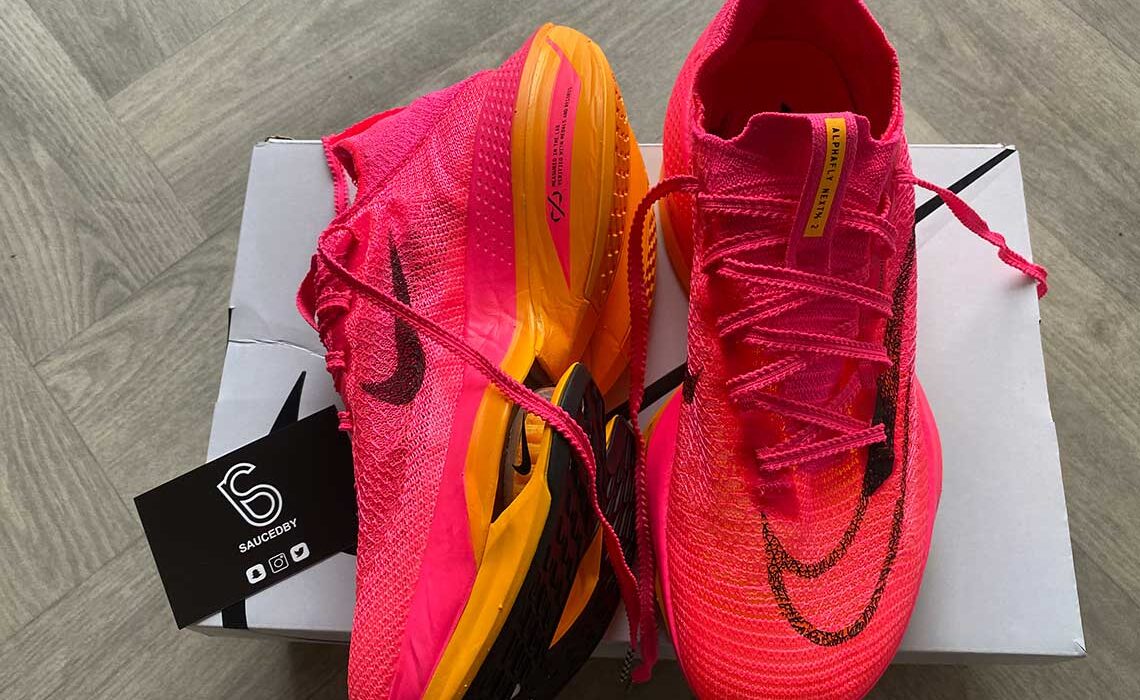Do you know the difference between sneakers and rubber shoes?
If you are looking for a new pair of shoes, you should learn more about these two types of footwear.
Sneakers and rubber shoes are not the same thing, and they have different features, benefits, and drawbacks that you should consider before buying them.
In this article, you will learn about:
- What are sneakers and rubber shoes?
- How do sneakers and rubber shoes feel, look, and perform?
- Sharing my personal experiences with sneakers and rubber shoes
- How do they compare in comfort, durability, style, and price?
- Choosing the best sneakers or rubber shoes for you?
By the end, you will clearly understand the difference between sneakers and rubber shoes.
We have included extra tips at the end of the article to help you choose the right sneaker or rubber shoes.
And able to decide which one suits your needs and preferences.
What are Sneakers?
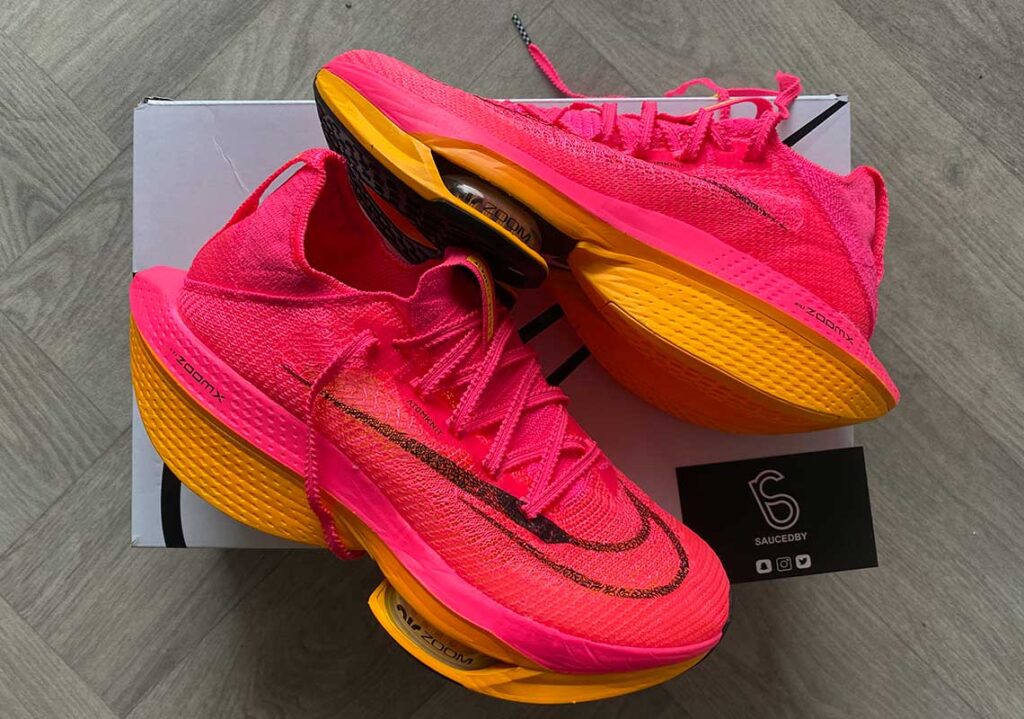
Sneakers are more than just shoes. They are platforms for brands to showcase their product technology and innovation.
They are also expressions of personal style and identity, with customisation options and a thriving custom sneaker market.
Sneakers provide support, safety, and comfort for different activities and lifestyles.
They have become fashion symbols, attracting luxury brands and celebrities. Sneakers combine comfort, style, and personal expression uniquely.
Personal Experience with Sneakers

One of the sneakers I reviewed recently was the Nike Air Max TW, a hybrid of two popular Nike models.
The cushioning and responsiveness of the shoe, as well as the colourful design, impressed me.
However, the shoe ran a bit small and narrow, so I had to go up half a size for a comfy fit.
You can watch my full review on my YouTube channel.
What are Rubber Shoes?
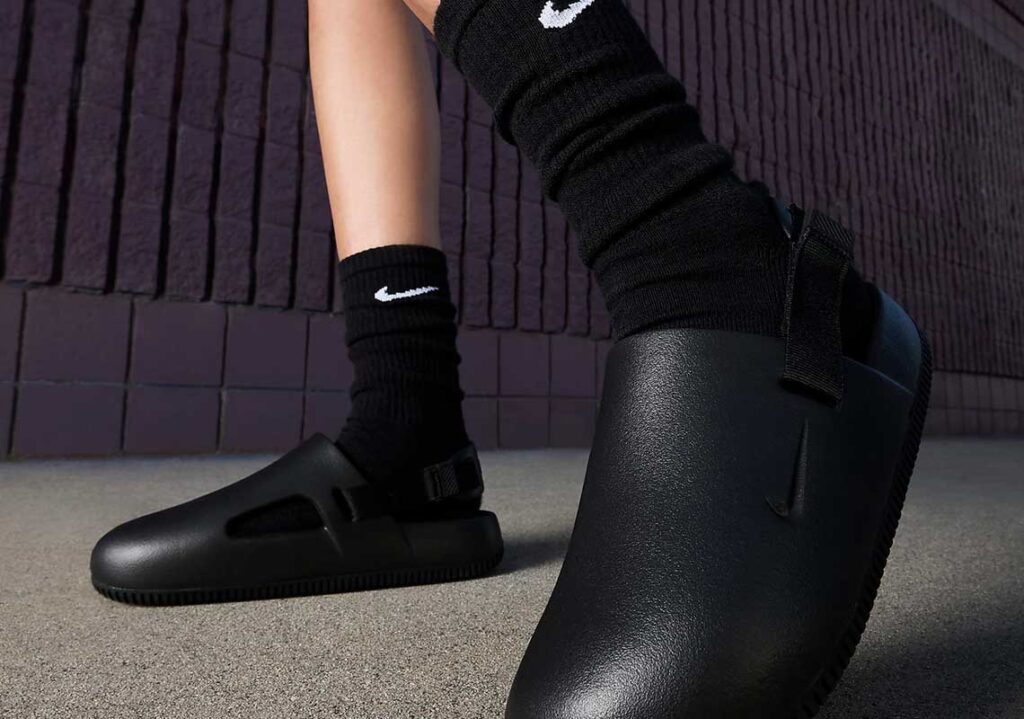
Shoes that have rubber soles or are made of rubber are rubber shoes.
They are usually casual and comfortable, with an open or closed heel and a slip-on style.
Sometimes called clogs or mules.
Rubber shoes are all-season products, meaning they can be worn in all weather conditions.
In the Philippines, rubber shoes mean sneakers, trainers or athletic shoes.
Features and benefits of rubber shoes are:
- Waterproof or water-resistant: suitable for wet or muddy environments
- Non-marking: do not leave any marks on the floor
- Odor-resistant: do not smell bad after wearing them
- Comfortable
- Convenient
- Versatile
Some rubber shoes are usually made of EVA foam, a type of plastic that provides lightweight durability and flexibility.
Personal Experience with Rubber Shoes
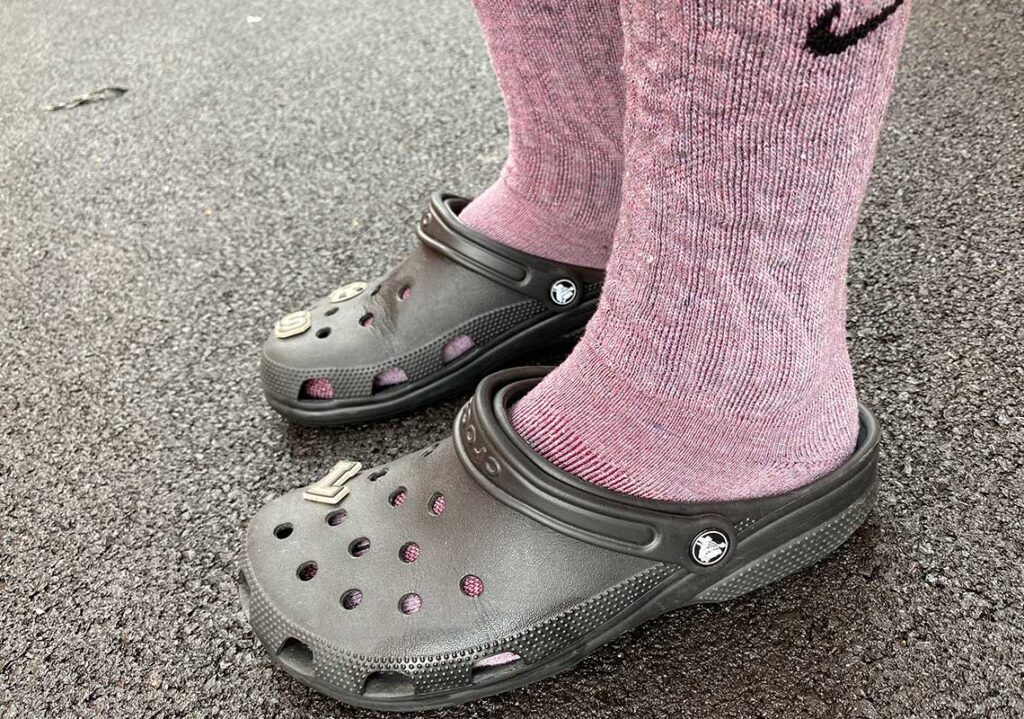
The reason why I love rubber shoes is that they are vegan-friendly.
I own a pair of Crocs Classic Clog in black and camo grey, which I wear almost anywhere.
They are perfect for when I need to head out quickly or when I want to relax after the gym.
They are also comfortable on my feet and do not cause blisters or irritation.
History of Crocs Rubber Shoes
- The company, founded in 1999 as a limited liability company, began to sell its footwear under the Crocs brand in 2002.
- The shoes were based on a modified and improved version of a shoe produced by Foam Creations, Inc.
- Originally marketed to water sports enthusiasts, the shoes gained popularity for their comfort and functionality.
- Bought Foam Creations in 2004.
Crocs Key Facts:
- Sold in over 4,700 stores and over 20 countries
- Sold 103 million pairs in 2021, up from 69.1 million pairs in 2020
- Donated over 3 million pairs of rubber shoes to healthcare workers during the COVID-19 pandemic.
- Collaborated with celebrities and artists like Justin Bieber, Post Malone, Bad Bunny and KISS.
Popular Rubber Shoes
Rubber shoes are also a type of shoe, but they have a specific material and design that distinguish them from other shoes.
Adidas Adilette Clog
Nike Calm Mule
Crocs Classic Clog
Fear of God California
Oofo Oocloog
Yeezy Foam Rnnr
Bottega Puddle Boot
Difference Between Sneakers and Rubber Shoes
| Qualities | Sneakers | Rubber Shoes |
| Design | Designed to showcase product technology and innovation, with cushioning, ventilation, traction, and stability features. They also offer customisation options such as Nike ID. | Designed to be casual and comfortable, with a slip-on style and an open or closed heel. |
| Comfort | Sneakers provide comfort for different activities and lifestyles, with support, safety, and shock absorption. They are usually made of breathable materials that keep the feet cool and dry. | Rubber shoes provide comfort for all-season wear, with waterproof or water-resistant properties that keep the feet dry and clean. |
| Style | Sneakers express personal style and identity with a thriving custom sneaker market and collaborations. | Versatile and convenient, with a simple, minimalist design that matches any outfit. |
| Fit | Sneakers fit snugly and securely on the wearer’s feet, who can adjust the laces or straps to their preference. They also come in different sizes and widths to suit various foot shapes. | Rubber shoes have a loose and relaxed fit, with no laces or straps that can restrict the movement of the feet. |
| Durability | Sneakers last long and resist wear and tear, thanks to their high-quality materials and craftsmanship. Parts such as insoles, laces, or outsoles can be replaced to extend their lifespan. | Rubber shoes resist stains, scratches, or cracks with durable, easy-to-clean rubber or EVA foam. They also have a simple construction that does not need much maintenance or repair. |
| Purpose | Sneakers are suitable for different purposes, such as sports, fitness, leisure, or fashion. They are designed to meet specific needs and preferences. | Rubber shoes are suitable for different purposes, such as gardening, camping or walking. |
Do you know how sneakers and rubber shoe soles are made? Watch this video and find out.
Pros and Cons of Sneakers
| Pros | Cons |
| Comfortable: Sneakers are designed to provide cushioning, support, grip and flexibility for your feet. | Expensive: Sneakers can cost a lot of money, especially if you want to buy the latest or limited edition models. |
| Versatile: Sneakers can be worn for different purposes, such as casual, athletic, or fashion. They can suit different occasions and environments. | Dirty: Sneakers can get dirty easily, especially if you wear them outdoors or in places with dust, mud, or water. Mesh and suede are difficult to clean. |
| Stylish: Sneakers can express your personality, taste, and preferences. | Foot problems: Sneakers can cause foot problems, such as blisters, corns, or fungal infections if not fitted properly. |
Pros and Cons of Rubber Shoes
| Pros | Cons |
| Waterproof or water-resistant: suitable for wet or muddy environments | Heavy: may cause fatigue or discomfort |
| Non-marking: do not leave any marks on the floor | Durability: easy to be pierced by sharp objects |
| Odor-resistant: do not smell bad after wearing them | Not Vegan: may not be biodegradable or recyclable |
How to Choose Between Sneakers and Rubber Shoes
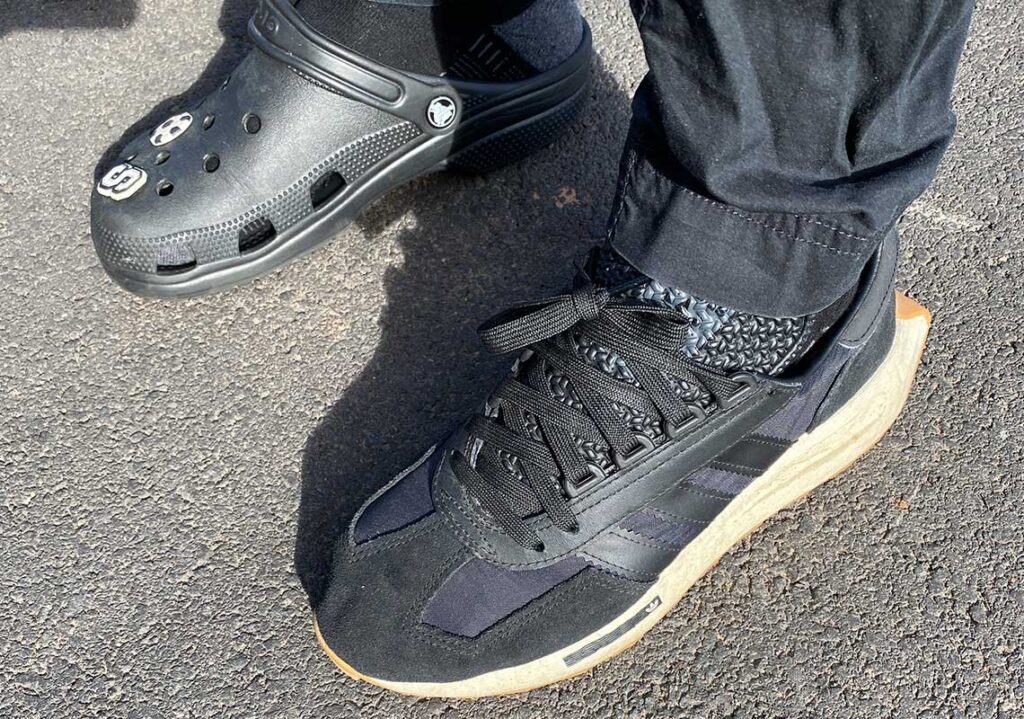
Sneakers and rubber shoes are popular footwear but have different features and purposes.
To choose between them, you need to consider the following factors:
Surface
- Brands design sneakers for various surfaces, such as pavement, grass, or trails.
- Rubber shoes are more suitable for smooth, flat, wet surfaces like tile, wood, or concrete.
Purpose
- Sneakers can serve various purposes, such as running, walking, or casual wear.
- Rubber shoes are more specialised and are mainly used for water sports, such as swimming, surfing, or sailing.
Feet type
- Sneakers come in different shapes and sizes to accommodate different foot types, such as low, normal, or high arches.
- Rubber shoes are more flexible and conform to the shape of your feet.
Fit
- Sneakers should fit snugly but not tightly, leaving space for your toes to wiggle.
- Rubber shoes should fit securely but not too tightly, allowing some water to flow through.
Extra tips to help you pick the best sneakers or rubber shoes:
Watch Reviews
You can find honest and helpful reviews on YouTube.
Check out this one, for example
Haha, shameless plug.
Try them on
- Nothing beats trying on the shoes before buying them. Wear your usual socks and orthotics if you have any, and see how they fit and feel.
Compare the price and value
- Sneakers are more expensive than rubber shoes but offer more durability and quality.
- Rubber shoes are cheaper but may wear out faster.
- Think about how often and how long you will use them.
Culture and Innovations
Bottega Veneta Rubber Puddle Boot
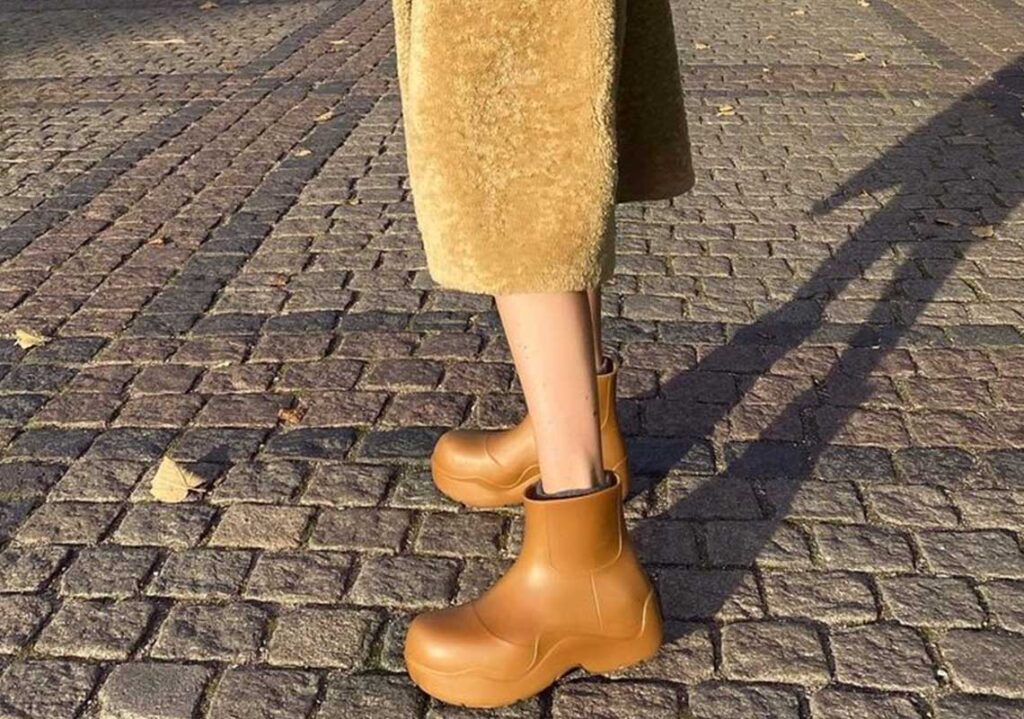
The rubber shoe market and hype has seen high-end brands creating their own unique version.
For example, Bottega Veneta released their Puddle boot, a type of rubber shoe, in 2020.
There are question marks over the sustainability of rubber shoes. “The rubber is made with natural molecules which come from sugarcane and coffee, rather than with synthetic chemicals”
As of December 31, 2022, shoes accounted for 14% of revenue for the brand.
Crocs Classic Clog
In 2021, Crocs became a 100% vegan brand, eliminating animal-derived materials from their products.
This means they do not use leather, wool, or other materials that harm animals.
Conclusion
You have learned the difference between sneakers and rubber shoes, two footwear types with different features, benefits, and drawbacks.
Sneakers and rubber shoes impact comfort, durability, style, price, and environment differently.
Sneakers and Rubber Shoe Differences FAQ
No, the materials and durability of sneakers and rubber shoes are different. Sneakers use high-quality materials that last long, while rubber shoes use durable rubber or foam that is easy to clean. For feet, sneakers provide cushioning, support, and flexibility. Rubber shoes are designed for casual and comfortable wear and have a simple and comfortable design.
The correct term for rubber shoes depends on the region and the type of shoes. In the Philippines, rubber shoes are sneakers, trainers or athletic shoes. In other parts of the world, rubber shoes are casual shoes with rubber soles or made of rubber that have a slip-on style and an open or closed heel.
People wear rubber shoes because they are suitable for different activities and environments. For example, some rubber shoes are waterproof, non-marking, or odour-resistant, while others are specialised in water sports.
Rubber shoes are comfortable because they fit well, are flexible, and are suitable for all seasons. These shoes fit securely but not too tightly, allowing some water to flow through. They adapt to the shape of your feet with their flexibility. You can wear them comfortably in any season, as they have waterproof or water-resistant properties that keep the feet dry and clean.

